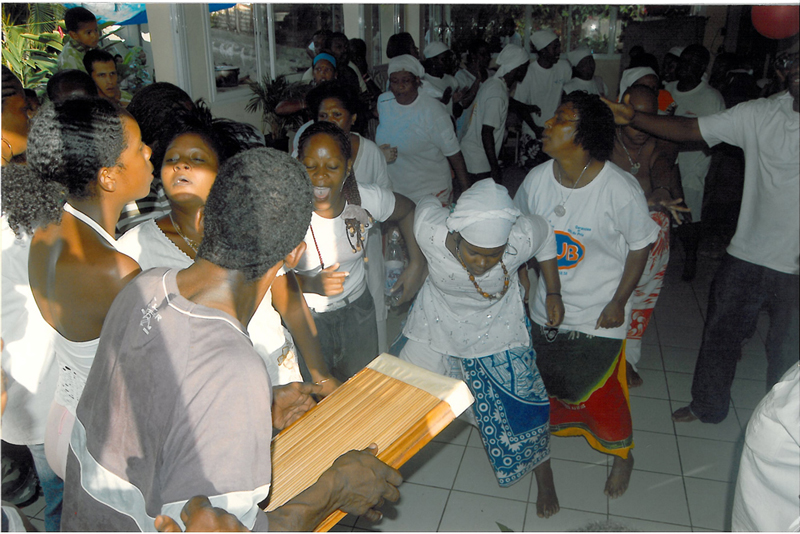(Headline image: Maloya celebration – Photograph: René Paul Savignan, © Savignan RP, 2001. Courtesy of UNESCO)
Maloya is one of the two major musical genres of Reunion Island (Réunion). It is typically performed in Reunion Creole, and traditionally accompanied by percussion and a musical bow. It has origins in the music of African and Malagasy slaves trafficked by French colonists, and Indian indentured workers on the island. Initially, maloya was a musical expression sung, played and danced by slaves in the sugar plantations.
In the 1970s, Maloya was banned due to its strong association with creole culture and was considered a threat to the French state. It was only in the eighties that the ban was lifted.
Sometimes Maloya is compared to American blues, though they have little in common. Traditional maloya uses only percussion and a musical bow, and songs employ a call-response structure. It is also considered the original dance music of La Réunion and is very different from contemporary maloya, which fuses elements of Reggae, Jazz, Pop or electronic music, creating a sound only remotely close to traditional maloya.
Traditional maloya percussion instruments include the roulèr, the pikèr, the bobre, and above all the kayamb or kayamba, a traditional Réunionese instrument inseparable from maloya practice. Maloya was included in the Inventory of Intangible Cultural Heritage in France and has been classified by UNESCO as the Intangible Cultural Heritage of Humanity since October 1, 2009.
Interestingly, maloya is not only great dance music but can also be protest music. The Communist Party made great use of maloya in the 1970s when the island was fighting for greater autonomy from France. As a consequence, maloya was seen as a threat to the state and was performed without being discovered by the French authorities by constantly changing tactics, organizing shows in different people’s homes, often under the guise of a birthday party.
In contemporary contexts, Maloya has evolved into a multifaceted expression, manifesting in diverse lyrical compositions and instrumental arrangements, thereby establishing its presence within the global music landscape. This transformation is driven by a cohort of emerging composers and performers who infuse Maloya with renewed vitality, propelling it onto the international stage where it harmoniously converges with a spectrum of musical genres, notably reggae, rock, and jazz.
Maloya’s instrumentation includes three essential musical instruments:

The kayamb, a resonant enclosure crafted from the fibrous leaves of green aloe intertwined with the stalks of flowering sugarcane, ingeniously assembled using strings and adhesive, and filled with seeds of wild saffron.
The roulèr, or skin drum, is an oak barrel truncated at both ends and encircled with metallic bands, featuring an ox hide stretched tight over one extremity to produce percussive resonance.

The bob, a musical bow of intricate construction, encompasses an amplifying receptacle fashioned from a hollowed-out gourd, a rattling apparatus (kaskavel) woven from plaited screw-pine and imbued with canna seeds, a bow fashioned from the timber of ochrosia, and strands of green aloe fiber. Performance of the bob entails striking its components with a stick (tikuti) made from acacia wood, eliciting distinctive melodic tones and rhythmic patterns.
Leading maloya artists include Firmin Viry, Baster, Granmoun Baba, Rwa Kaff den Ti Fock, Danyèl Waro, Christine Salem, René Lacaille, and Ziskakan.


